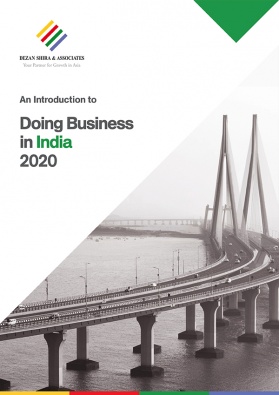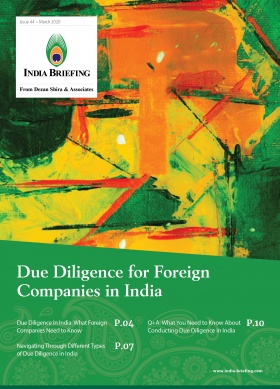India-EU Summit 2020: What Has Changed in Bilateral Ties and Can We Expect an FTA?
- Negotiations for a trade and investment pact between the two regions has stalled for years over differences in securing market access and enabling the free movement of professionals.
- Despite no major changes in these positions on the part of India and the EU – both Delhi and Brussels are keen to ease their dependency on China’s supply chains and prefer an international order based on multilateralism.
- Both sides make mention of economic sovereignty and strategic autonomy as vital to their economic and security policy agenda and an alignment of interests in this regard could bring fresh impetus to restart India-EU FTA talks.
India and the European Union (EU) held their annual summit this week after a gap of two years due to unresolvable differences.
This year, the 15th India-EU summit was held virtually, on July 15, and attended by the Indian prime minister Narendra Modi, Charles Michel, president of the European Council, and Ursula von der Leyen, president of the European Commission. The European Council shapes the political direction and policy priorities of the EU and the European Commission is the EU’s executive branch.
India-EU virtual summit 2020 – key takeaways
On Wednesday, India and the EU announced a five-year roadmap to build a wider strategic partnership.
A key aspect of this roadmap is likely to be the setting up of a high-level dialogue to address long-standing trade irritants that have come in the way of the 27-member union signing an FTA with India. The dialogue will include discussions on improving conditions for traders and investors on both sides as well as supply chain linkages. According to India’s External Affairs Ministry Secretary Vikas Swarup, the two sides are hoping to restart trade talks in the next few months.
Swarup also said that PM Modi invited European companies “to invest in India, given the efforts made by his government to improve ease of doing business, regulatory environment and its aim to integrate the country with global value chains.”
At the end of the virtual summit, a joint declaration was released, which included a commitment to achieving resource efficiency by working towards a circular economic model. Such a model envisions the reduction in primary resource consumption and enhancing the use of secondary raw materials.
A post COVID-19 economic recovery can potentially accelerate this transition to sustainable patterns of economic growth and development. That in turn will open up greater opportunities for bilateral trade and investment.
Another frontier for future trade and investment will be the digital economy – India values the EU states as a source of high-tech, including artificial intelligence and 5G, besides the innovation and investment needed to expand the country’s infrastructure, tackle climate change, and upgrade cities with ‘smart’ architecture. While COVID-19 has pushed the shift towards a digital economy with more urgency than ever seen before, the new normal will require massive and secure technology upgradation. This is going to necessitate a closer partnership between India and the EU as new priorities may reset the tone of future trade negotiations.
Sticking points in India-EU FTA talks
The EU launched talks with India to establish a broad-based free trade agreement (FTA) back in 2007 after discussions at the seventh India-EU summit held at Helsinki the year before. However, negotiations over the proposed Bilateral Trade and Investment Agreement (BTIA) broke down in 2013 after no significant progress was made and talks were suspended in May that year. Talks resumed at a technical level in October 2017 but reached another impasse.
Major sticking points in the India-EU trade and investment negotiations have been over tariffs on automobiles, wines and spirits and the restrictions on free movement of professionals. Here, it would appear that India’s position is similar to why it ultimately refused to join the RCEP – New Delhi seeks to protect the extensively lobbied interests of its domestic players in the goods trade but wants greater relaxations for India’s services exports.
Further, India has previously asked for a smaller trade agreement with the EU first before negotiating a wider FTA. The EU, on the other hand, desires a “full-fledged trade agreement” and slashing tariffs on 90 percent of the goods traded.
EU officials have complained that India is increasingly favoring economic protectionism over market openness as evidenced in the recent Atmanirbhar Bharat (self-reliant India) and Make in India programs.
The European Commission also clearly states that India’s trade and regulatory environment is restrictive: “Technical barriers to trade (TBT), sanitary and phyto-sanitary (SPS) measures, deviation from international standards and agreements, as well as discrimination based on legislative or administrative measures by India, affect a wide range of sectors, including goods, services, investment and public procurement.”
Factors impacting India-EU trade and investment talks
The US-China trade war, a resurgent China, and a pandemic does plenty to shift ground realities for negotiators on both sides. The world’s dependency on China’s highly integrated supply chain suffered during the initial days of the pandemic but as China stabilized, other concerns came to the fore. Meanwhile, foreign firms based in China were already expanding or relocating operations to lower cost regions, with countries in Southeast Asia proving early winners. Regardless, India has a lot to offer EU businesses in terms of manufacturing and sourcing as well as cheap and surplus labor – but it will need to back up its material commitments through regulatory easing and transparent bureaucracy.
Tariff protections have also been a pain point for all parties negotiating trade deals with India as it does not want domestic firms to become uncompetitive in the Indian market. At the same time, India aspires to be a manufacturing hub and integrate into the global supply chain, all of which will require extensive foreign investment and an open market. To balance these outcomes, New Delhi will need to make compromises and the nature and extent of those is what market analysts are waiting to see. Under the Modi government, various agriculture and industry lobby groups have continued to wield influence over policymaking despite the departure expected by foreign governments who assumed India would be now open for business. That is because the current regime is essentially a nationalist one.
Yet, as India’s economy continues to suffer from successive years of slow economic growth due to external headwinds and rising levels of bad debt in the country, and now the impact of COVID-19 – it cannot afford to be self-reliant on its own. A mere glance at funding for new capital-intensive projects and startups will show just how dependent India is on foreign capital, which – additionally – has been dominated by Chinese players and associated VC firms.
As India’s border tensions continue to impact Chinese-funded sectors in the country, the Modi government will want to diversify sources of FDI – irrespective of the propaganda-bound nationalist narrative. Just earlier this week, Google announced it would be investing US$4.5 billion (Rs 33,737 crore) in Reliance Jio Platforms Ltd for a 7.73 percent stake over the next five to seven years through a mix of equity investments, partnerships, and operational, infrastructure, and ecosystem investments to accelerate the development of India’s digital economy and improve affordable internet access. EU manufacturers and businesses in key sectors relating to technology and renewables could tap into the emerging priorities in the Indian economy.
India-EU trade and investment profile
Trade in goods between India and the EU increased by 72 percent over the last decade, according to data published by the European Commission. The Commission reported the following breakdown of bilateral trade and investment:
- The EU is India’s largest trading partner and last year accounted for trade in goods worth €80 billion (US$91.07 billion) or 11.1 percent of total Indian trade – on par with the US and ahead of China (10.7 percent). For Indian exports, the EU is its second largest destination (over 14 percent of total Indian exports) after the US.
- India is the EU’s 10th largest trading partner, accounting for 1.9 percent of the EU’s total trade in goods in 2019, well behind the US (15.2 percent), China (13.8 percent), and the UK (12.6 percent).
- Trade in services between the EU and India is steadily rising, going from €22.3 billion (US$25.38 billion) in 2015 to €29.6 billion (US$33.69 billion) in 2018.
- The EU’s share in foreign investment inflows to India also more than doubled from eight percent to 18 percent in the last 10 years. Nevertheless, foreign direct investment (FDI) from the EU to India amounted to just €68 billion (US$77.41 billion) in 2018, much below its FDI stocks in China (€175 billion or US$199.22 billion) and Brazil (€312 billion or US$355.19 billion).
- Around 6,000 European companies, involved in a broad range of sectors, have their presence in India, generating 1.7 million direct jobs and indirectly providing 5 million jobs.
- Indian companies invested just over €50 billion (US$56.92 billion) in Europe since 2000.
About Us
India Briefing is produced by Dezan Shira & Associates. The firm assists foreign investors throughout Asia from offices across the world, including in Delhi and Mumbai. Readers may write to india@dezshira.com for business support in India.
- Previous Article US Businesses Increasingly Investing in India for Sourcing and Manufacturing in 2020
- Next Article India Discusses Preferential Trade Agreement with Southern African Customs Union










